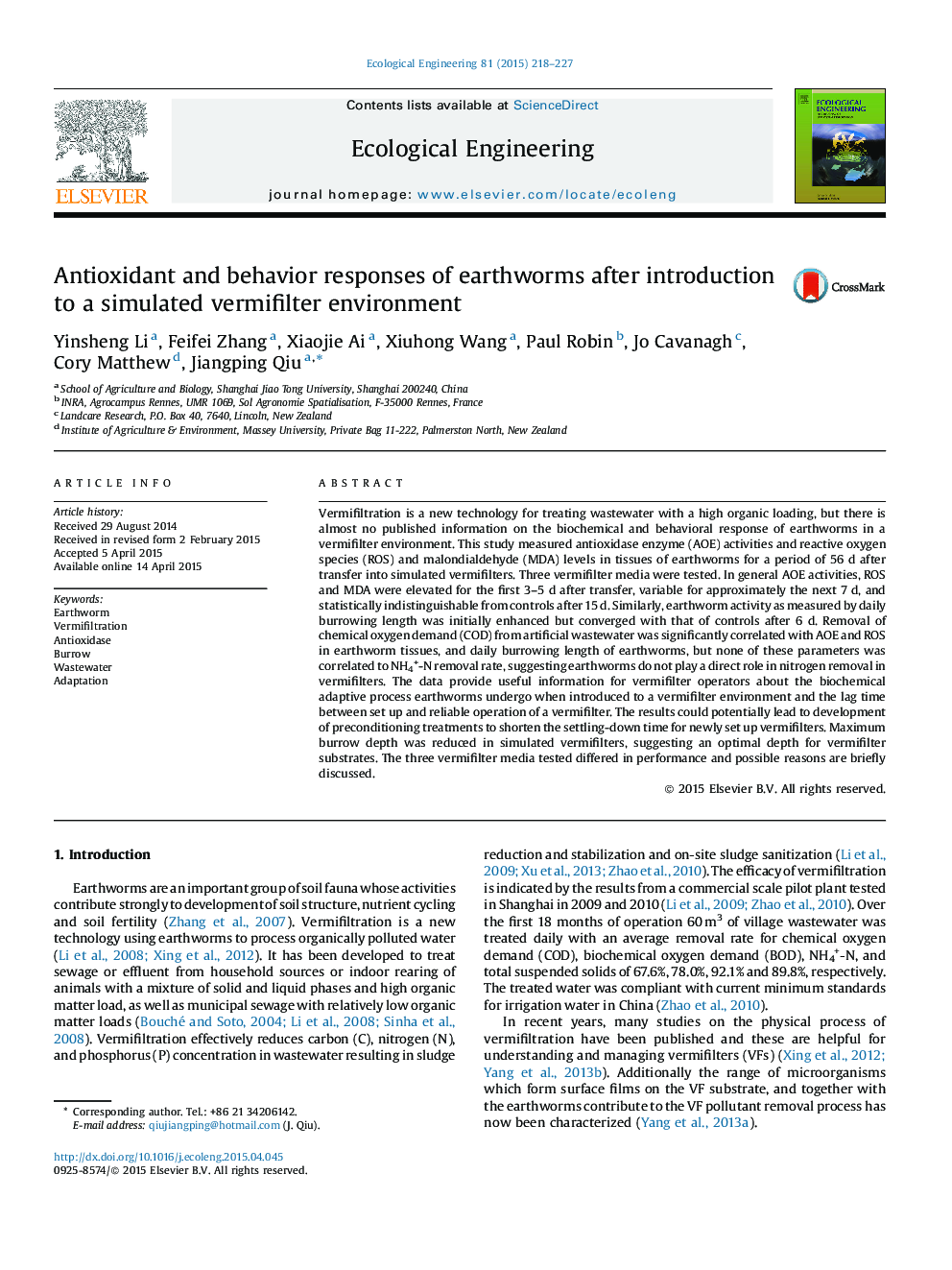| Article ID | Journal | Published Year | Pages | File Type |
|---|---|---|---|---|
| 4389076 | Ecological Engineering | 2015 | 10 Pages |
•Oxidative stress and antioxidant responses occurred in earthworms in vermifilters.•Adaption to the vermifilter environment occurred over two weeks.•Antioxidant response occurred in 2 phases and was correlated with COD removal.•Earthworm burrowing activity greatly increased during first week in vermifilters.•Filter materials affect the antioxidant and behavior responses of earthworms.
Vermifiltration is a new technology for treating wastewater with a high organic loading, but there is almost no published information on the biochemical and behavioral response of earthworms in a vermifilter environment. This study measured antioxidase enzyme (AOE) activities and reactive oxygen species (ROS) and malondialdehyde (MDA) levels in tissues of earthworms for a period of 56 d after transfer into simulated vermifilters. Three vermifilter media were tested. In general AOE activities, ROS and MDA were elevated for the first 3–5 d after transfer, variable for approximately the next 7 d, and statistically indistinguishable from controls after 15 d. Similarly, earthworm activity as measured by daily burrowing length was initially enhanced but converged with that of controls after 6 d. Removal of chemical oxygen demand (COD) from artificial wastewater was significantly correlated with AOE and ROS in earthworm tissues, and daily burrowing length of earthworms, but none of these parameters was correlated to NH4+-N removal rate, suggesting earthworms do not play a direct role in nitrogen removal in vermifilters. The data provide useful information for vermifilter operators about the biochemical adaptive process earthworms undergo when introduced to a vermifilter environment and the lag time between set up and reliable operation of a vermifilter. The results could potentially lead to development of preconditioning treatments to shorten the settling-down time for newly set up vermifilters. Maximum burrow depth was reduced in simulated vermifilters, suggesting an optimal depth for vermifilter substrates. The three vermifilter media tested differed in performance and possible reasons are briefly discussed.
